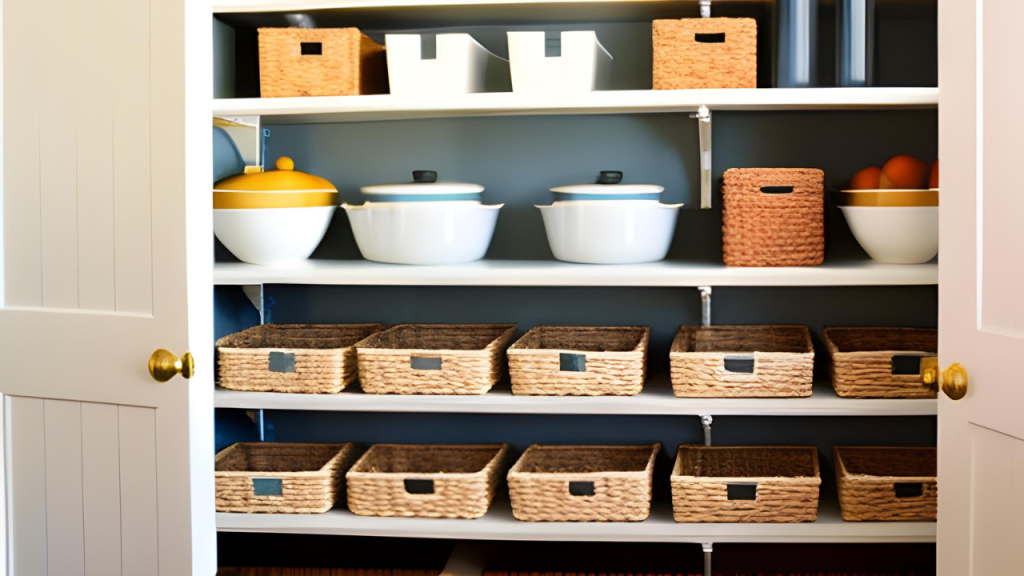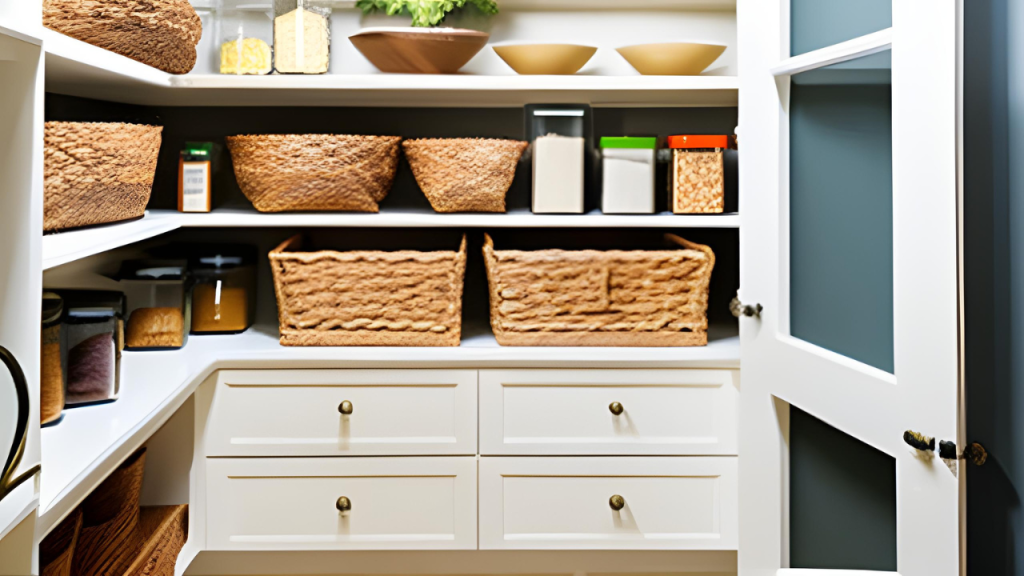Have you tried organizing a pantry without containers? This can be challenging, especially if you have a small space or a small pantry space. This is why this article will guide you on how to organize pantry without containers. Everyone dreams of an immaculate pantry—orderly, clutter-free, and efficient.
But while numerous solutions revolve around containers, what if we told you that you could still have an organized pantry without them? Yes, it’s time to think outside the box (or container)! This article provides in-depth insights and first-hand experiences on how to organize a pantry without containers, guaranteeing an appealing and functional storage space.
To organize the pantry without containers, group items by type, utilize original packaging and seal well, use dividers or baskets to separate items and label for identification. Also, follow the FIFO method by placing older items in front, avoiding overstocking by buying only as needed, and maintaining the organization regularly by cleaning and organizing.

How to Organize Pantry Without Containers
A common misconception is that containers are the be-all and end-all of pantry organization. However, the truth is far from it. With a sprinkle of creativity and a dollop of determination, one can achieve pantry nirvana without a container in sight.
Grouping Similar Items
Without containers, you must rely on visual cues. Start by grouping similar items. It’ll be easier to spot what you need, and you won’t buy duplicates.
Use of Shelves
Maximize shelf space. Consider installing floating shelves or extending existing ones. This optimizes vertical space and provides designated spots for different items.
Repurpose Household Items
Do you have an old wine rack? Use it for bottled goods. Empty egg cartons? They can hold small packets. Think outside the container!
Pantry Zones: Dividing and Conquering
Dividing your pantry into zones can streamline your cooking process and reduce the time spent searching for items.
Baking Zone
Group together flour, baking powder, cocoa, and similar items.
Breakfast Zone
Cereals, oats, and pancake mixes can find their spot here.
Snack Zone
Dedicate a space for your chips, nuts, and other munchies. This way, your kids (or you) know exactly where to head when hunger strikes!
Label Everything
When you forgo containers, labels can be your best friend.
Chalkboard Paint
Painting a small section of your pantry walls with chalkboard paint allows for easy labeling and re-labeling.
Sticky Notes
They’re not just for office reminders! Use colorful sticky notes to label shelves or sections.
Clip-on Tags
These can be attached to baskets or bins, clearly indicating what lies within.
Incorporating Baskets and Bins
Baskets and bins might feel like cheating, but they’re technically not containers! They offer a middle ground – providing organization without being restrictive.
Wicker Baskets
They breathe better, making them perfect for fruits or vegetables.
Plastic Bins
It is ideal for packets or items that might spill.
Wire Mesh Baskets
These are great for canned goods, allowing you to see what’s inside easily.
Pantry Maintenance: Keeping It Neat
Once organized, the next mammoth task is to keep it that way.
Regular Check-ins
Every month, assess your pantry. Check for expired items and remove them. Tweak the organization if needed.
Use FIFO (First In, First Out)
This old inventory rule ensures that older items are used first, reducing waste.
Rotate Stock
When you buy new items, rotate your stock. Place newer items at the back and push older ones to the front.
Seasonal Adjustments
Your pantry needs will change with the seasons. Being adaptable can make your pantry more functional.
Summer
Dedicate space for BBQ sauces, marshmallows, and other summer essentials.
Winter
Make room for hot cocoa, soup packets, and holiday baking ingredients.
Festive Periods
During festivals, you might have specific ingredients. Create temporary zones for these.
Pros and Cons of a Container-Free Pantry
While the container-free approach has its merits, weighing the good against the not-so-good is essential.
- Pros: Flexibility in design, cost-effectiveness, and adaptability.
- Cons: It might not be as airtight and can be visually chaotic if not maintained.
Frequently Asked Question
How can I maximize space in a small pantry?
Opt for multi-tiered shelves, use door racks, and hang items using pegs or hooks. The key is to use every nook and cranny efficiently.
Is a container-free pantry suitable for all climates?
In humid climates, some items might benefit from airtight containers. However, for most climates, a container-free pantry works just fine if maintained well.
Can I mix and match containers with a container-free approach?
Absolutely! It’s your pantry, after all. Find a balance that works best for you.
How do I keep pests out of a container-free pantry?
Maintain cleanliness, ensure there are no food spillages, and store grains or flours in the fridge if pests are a significant concern.
How often should I reorganize my pantry?
It’s good to do a quick monthly check and a more thorough reorganization every 6 months or so.
Are there specific items that shouldn’t be stored in a container-free pantry?
Items that require an airtight seal, like certain flours or grains in humid climates, might be better off in containers.
Conclusion
Organizing a pantry without containers is not just possible but can be both fun and efficient. With the right strategies and a touch of creativity, your pantry can be transformed into a functional and aesthetically pleasing space. The container-free journey might seem daunting at first, but once you embark on it, there’s no looking back. If you still have issues with How to Organize Pantry Without Containers, then get in touch. Here’s to a well-organized pantry and stress-free cooking!


